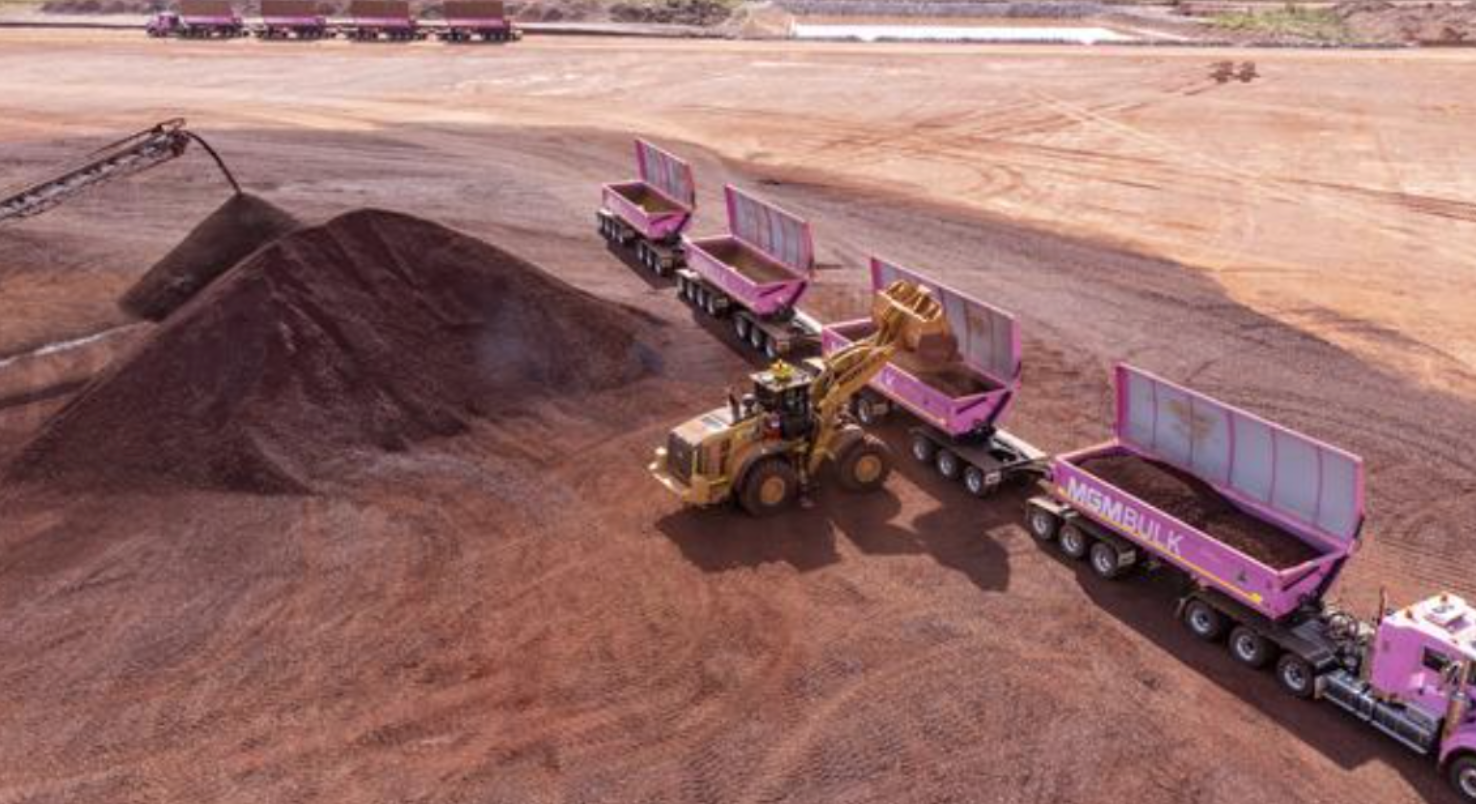 Article by Nick Evans courtesy of the Australian.
Article by Nick Evans courtesy of the Australian.

Gina Rinehart’s Atlas Iron has flagged plans to join the push towards building a magnetite iron ore industry in Australia, dusting off boom-era plans to study the company’s 2 billion tonne Ridley deposit.
But Atlas will take a far more cautious approach than the multi-billion dollar developments of rival iron ore producers Fortescue Metals Group, CITIC and Karara, flagging the use of a modular approach to its entry into the high-grade iron ore concentrate market.
Magnetite iron ore production uses magnetic processing plants to extract iron ore from low grade deposits that contain only 30 to 40 per cent iron.
But instead of building the massive multi-billion dollar crushing and separation plants that have caused problems for previous magnetite hopefuls, Atlas has signalled that it plans to take a staged approach to its own development.
CITIC’s Sino Iron deposit was originally tipped to cost only $US6bn to build, but after years of troubles eventually cost more than twice its original budget. Karara, in the mid west of WA, also suffered from multi-billion dollar budget blowouts.
And the final cost of Fortescue’s Iron Bridge development is yet to be tallied, but the company has flagged an overrun of up to $US900m on top of its original $US2.6bn construction cost.
Atlas said on Friday it has formally launched a feasibility study into Ridley, once touted by the company as the best magnetite deposit in the Pilbara, with iron ore grades of more than 36 per cent iron.
But rather than replicate Atlas’ 2009 plans to build a 15 million tonne a year operation at a cost of about $3bn, the company now says it plans to take a staged approach to Ridley’s development.
Atlas chief executive Sanjiv Manchanda said on Friday that, if the latest study shows the deposit can be developed successfully, Atlas will pull the trigger on the construction of a 3 million tonne a year trial plant which would have “scope for further expansion”.
The company said it plans to complete the feasibility study in the second half of 2023.
Atlas did not give further details of its planned development, but Mrs Rinehart’s Roy Hill mine has already successfully installed wet high intensity magnetic separation (WHIMS) modules at its own operations, to upgrade ore that would otherwise be destined for the waste pile.
Atlas would need to also install grinding plants to turn the magnetite ore – which is some of the hardest rocks in the Pilbara – into a fine dust before it is run through the separation plant.
A staged approach to the development would likely allow Atlas to progressively install grinding mills of a size commonly in the state’s gold industry, substantially reducing the risk of the development if they were combined with the group’s existing experience with WHIMS plants.
Mr Manchanda also noted on Friday that Atlas was planning the development in what is arguably the hottest construction market in the state’s history, with critical shortages of skilled workers were pushing up labour costs and the global supply chain crisis was limiting access to equipment.
“While the current environment of skills shortage, long lead times for regulatory approvals and lead times for major equipment make the task of feasibility study challenging, we will ensure that our existing discipline, engagement of stakeholders and cost focus continues with the Ridley project,” he said.
Even modest initial output of around 3 million tonnes a year would offer a blending opportunity that could significantly upgrade the value of the output from Atlas existing mines, which have historically produced iron ore grading about 58 per cent.
The approach outlined by Atlas on Friday is similar to that taken by Chris Ellison’s Mineral Resources, which outlined plans in November to build a 5 million tonne magnetite operation at its Yilgarn iron ore operations at a cost of about $400m.
MinRes and Mrs Rinehart’s Hancock Prospecting group, which includes Atlas Iron, have a close business relationship, including plans for new iron ore berths at Port Hedland and the development of a new iron ore mining hub in the West Pilbara.















